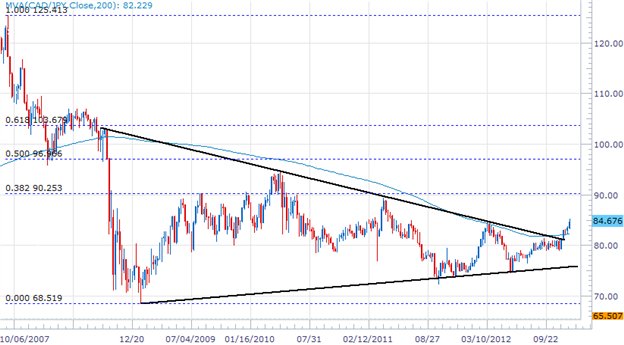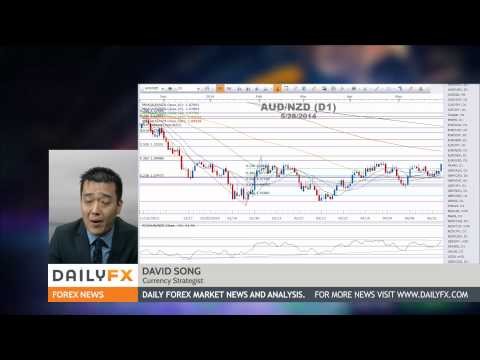Top 5 Forex Trading Opportunities this Week
Post on: 21 Октябрь, 2015 No Comment

- Top 5 Forex Trading Opportunities this Week
- USD/JPY Rally Stalled by Decline in U.S. Rates
- GBP: Nothing Matters as Much as Scotland’s Referendum
- AUD: Don’t Expect Much from RBA Minutes
- CAD: Rebounds on Higher Oil Prices, Stronger Data and Weaker USD
- NZD: First Rally in 6 Trading Days

Top 5 Forex Trading Opportunities this Week
By now, many investors know that this is going to be an extremely active week in the foreign exchange market. There’s no shortage of market moving economic releases but the top 5 events to watch in order of importance are the FOMC rate decision, Scotland’s referendum, the ECB’s first Targeted Long Term Refinancing Operation (TLTRO), the Swiss National Bank’s monetary policy meeting and the Bank of England minutes. Today, we are publishing our daily note with a different layout because we want to spend some time talking about trading opportunities. It is our base view that the Fed will disappoint dollar bulls, Scotland will vote to remain part of the U.K. the ECB’s TLTRO auction will receive decent demand while the SNB will cut interest rates. Of course, we do not expect every one of our predictions to be spot on, but what we are certain of is that each one of these will create new trading opportunities. The trades that we are watching most closely are the following:
EUR/USD — When it comes to the euro, the first event risk will be the Fed’s monetary policy announcement and the second will be the ECB’s TLTRO auction and we expect both to have a significant impact on EUR/USD. Starting with the Fed, there are more ways they could fall short on expectations than exceed it. If they choose to leave the line about rates remaining low for a considerable time after QE ends in the statement, downplay the improvements in the economy or leave their assessment of significant under-utilization of labor resources unchanged, the EUR/USD could soar above 1.31. However if the Fed drops the statement about rates remaining low, it would fuel speculation for a first quarter rate hike and send EUR/USD towards 1.28. The next leg of these moves would then be determined by the uptake for the TLTRO program. The number to watch is 200 billion. The closer bank borrowing is to this level, the more positive it is for the EUR/USD and the further away, the more negative.
USD/JPY — While we don’t expect Wednesday’s FOMC announcement to kill the overall uptrend in USD/JPY, it could certainly lead to a deep and nasty correction. There are no major Japanese event risks this week, so the move the currency pair will be determined entirely by the market’s appetite for U.S. dollars. If our baseline view is correct and the Fed disappoints USD/JPY could fall as low as 105. However USD/JPY is best traded reactively because if the Fed adopts a less dovish posture, USD/JPY could make a run for 110. We believe that the best way to position for the FOMC rate decision is to place orders to sell USD/JPY below 106 and to buy above 108.
GBP/USD — There are a ton of important U.K. economic reports scheduled for release this week including the Bank of England minutes, CPI, retail sales and employment but each one of these events will take a backseat to Scotland’s referendum. This means that even if the minutes are hawkish, the rally in sterling will be limited and short-lived. Given the uncertainty surrounding the referendum and the significance that it has on the medium term outlook for the U.K. economy, the referendum is best traded reactively because once the currency starts to move, there should be continuation. We recommend looking for opportunities to buy GBP/USD above 1.64 and opportunities to sell below 1 6000.
EUR/CHF — The Swiss Franc is no longer teasing the SNB’s 1.20 EUR/CHF peg but given the decline in price pressures and risk of deflation, the central bank could still lower rates to negative levels. If they choose to do so, it should send the franc sharply higher with EUR/CHF making a run for 1.22. There are 2 options to trade EUR/CHF — either buy on a dip to below 1.21 with a stop below the 1.20 peg or buy above 1.2140.
GBP/CHF — Both the Scottish referendum and the Swiss National Bank’s monetary policy announcement are scheduled for the same day and if Scotland votes to remain part of the U.K. and the SNB lowers rates, we could see an unusually large move in GBP/CHF. This scenario is more likely than most appreciate and if it occurs, we could easily see GBP/CHF hit a 2-year high above 1.54. This opportunity should only be traded after the referendum results are clear and while the currency pair may have already began to move, we expect there to be significant follow through in the days to follow if the scenario described above comes into fruition.
USD/JPY Rally Stalled by Decline in U.S. Rates
A decline in U.S. rates on Monday prevented the dollar from extending to new highs against the Japanese Yen. Considering that 10-year yields jumped 6bp on Friday, a correction in rates is not unusual. While today’s U.S. economic reports were mixed, the overall takeaway is one of continued recovery for the U.S. economy and that is the backdrop in which we will enter Wednesday’s FOMC rate decision. In the month of September, manufacturing activity in the NY region grew at its fastest pace since 2009 according to the Empire State survey. Industrial and manufacturing production on the other hand declined in August but neither IP nor the Empire Survey had a significant impact on the dollar. The greenback traded higher versus the euro, British pound, Swiss Franc and Australian dollar and lower against the Japanese Yen, Canadian and New Zealand dollars. The lack of consistency in the dollar’s performance today indicates that there is a lot more influencing FX trade this week than the market’s appetite for U.S. dollars. Nonetheless the FOMC rate decision is the first major event risk on the calendar so at first, the direction of the dollar will be extremely important. Given how well the dollar performed over the past few weeks, we anticipate further profit taking ahead of Wednesday’s announcement. Tomorrow’s producer price report is not expected to have a dramatic impact on the greenback because price pressures remain low and inflation will not be the main motivation for any changes from the Fed.
GBP: Nothing Matters as Much as Scotland’s Referendum
Nothing matters as much this week to U.K. assets including the British pound as much as Scotland’s referendum. Today for example, sterling traded lower against the U.S. dollar despite stronger than expected house prices. Tomorrow consumer prices are scheduled for release and normally this piece of data would have a significant impact on the currency because of the importance that inflation has on monetary policy. However even though price pressures are expected to rise, reinforcing the Bank of England’s hawkish bias, the positive impact that it is expected to have on sterling should be limited. The same is true for Wednesday’s BoE minutes. For the most part, BoE Governor Carney has made his views quite clear — that rates will begin to rise in the spring of next year. Whether they stick to this view or not hinges in large part on how much damage the Scottish referendum has on the economy and this explains why investors may be hesitant about taking any outsized positions ahead of the vote. If anything we anticipate a bit of short covering in sterling ahead of the vote but according to the CFTC’s latest IMM report, speculators are net long and not short the currency, which means short covering could be limited. All it takes is a bit of patience because after the referendum is over, we expect big moves for the pound.
All three of the commodity currencies rebounded against the U.S. dollar during North American trade. CAD and NZD ended the day in positive territory but the Australian dollar recovered most but not all of today’s losses. The rise in commodity prices and decline in the U.S. dollar contributed to today’s move but the latest economic reports also influenced how these currencies traded. The rally in the loonie for example was supported by stronger than expected existing home sales. This uptick was a bit of a surprise because of the recent decline in house prices. The New Zealand dollar on the other hand gained strength despite weaker than expected economic data. The slowdown in service sector activity in the month of August should have been negative for the currency but instead, NZD/USD rose for the first time in 6 trading days. The Australian dollar was hit hard overnight due to softer Chinese manufacturing data but the deeply oversold currency recovered quickly after a brief dip below 90 cents. Tonight the RBA releases the minutes from its last monetary policy meeting and considering that no surprises seen this month we do not expect the minutes to have a significant impact on the Australian dollar.














